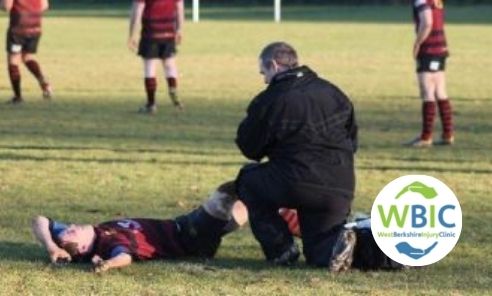Nobody wants to get an injury! There is always the chance of picking up an injury from sports activities but injuries can occur from:-
- Working from Home
- Working around the house,
- In the garden or
- Even just walking down the street.
You’ve picked up an injury, what should you do?
Obviously come and see us at West Berkshire Injury Clinic however not all injuries require intervention but here is some general help and advice.
Tips for dealing with an injury
Most injuries don’t require a visit to A&E or Minor Injury Units but if you are concerned then make sure you get it assessed by a Physiotherapist, appropriately trained Sports Therapist or Osteopath. A visit to the GP maybe appropriate but use your common sense. If you are in significant pain then go to A&E or a Minor Injury Unit but these guys are busy and you may wait for a long time so be realistic about it.
There have been many protocols for dealing with an injury although some have just been extensions of “old” protocols. There is also discussion about RICE etc.. however it is current recommended method for dealing with the early stages of injury.
The most common is RICE also seen as PRICE (NHS) or PRICED. Advice constantly changes but for today lets stick to RICE.
R – REST:
When you first injure yourself rest the area that is injured; ankle/knee, try not to weight bear; hand/elbow/shoulder try not to use the injured part. However it is important to get moving as quickly as possible – the level of pain will let you know. NHS recommends 48 – 72 hours!
I – ICE:
When you injure yourself, there is likely to be inflammation. Inflammation consists of heat, swelling and pain, and ice is a natural remedy to counteract the effects of inflammation and provide pain relief.
The usual suggestion is a bag of frozen peas. Why? Because a) They’re in the freezer and b) the peas will mould themselves around the injured area. If you don’t have frozen peas, or they’re on tonight’s menu, then you can use ice cubes but there in a plastic bag first.
Remember ICE CAN BURN, so always put a barrier (a tea towel will do) between the ice and the skin.
For the first 48-72 hours – use ice for 10 mins every waking hour.
C – COMPRESSION
I would only use compression on peripheral joints e.g. Ankle, Wrist etc.. however only use compression if really needed and you can’t rest. Use an elasticated bandage or tubigrip.
Tubigrip is readily available at local chemists but make sure that you get the appropriate size. The tubigrip must not be too tight otherwise it will restrict blood flow. Make sure its a snug fit!
At night – remove all Compression.
E – Elevation
This is only really possible with leg injuries – Put your foot on something and try to make sure the injured part is supported and is higher than your hip!
—oOo—
Further Reading

